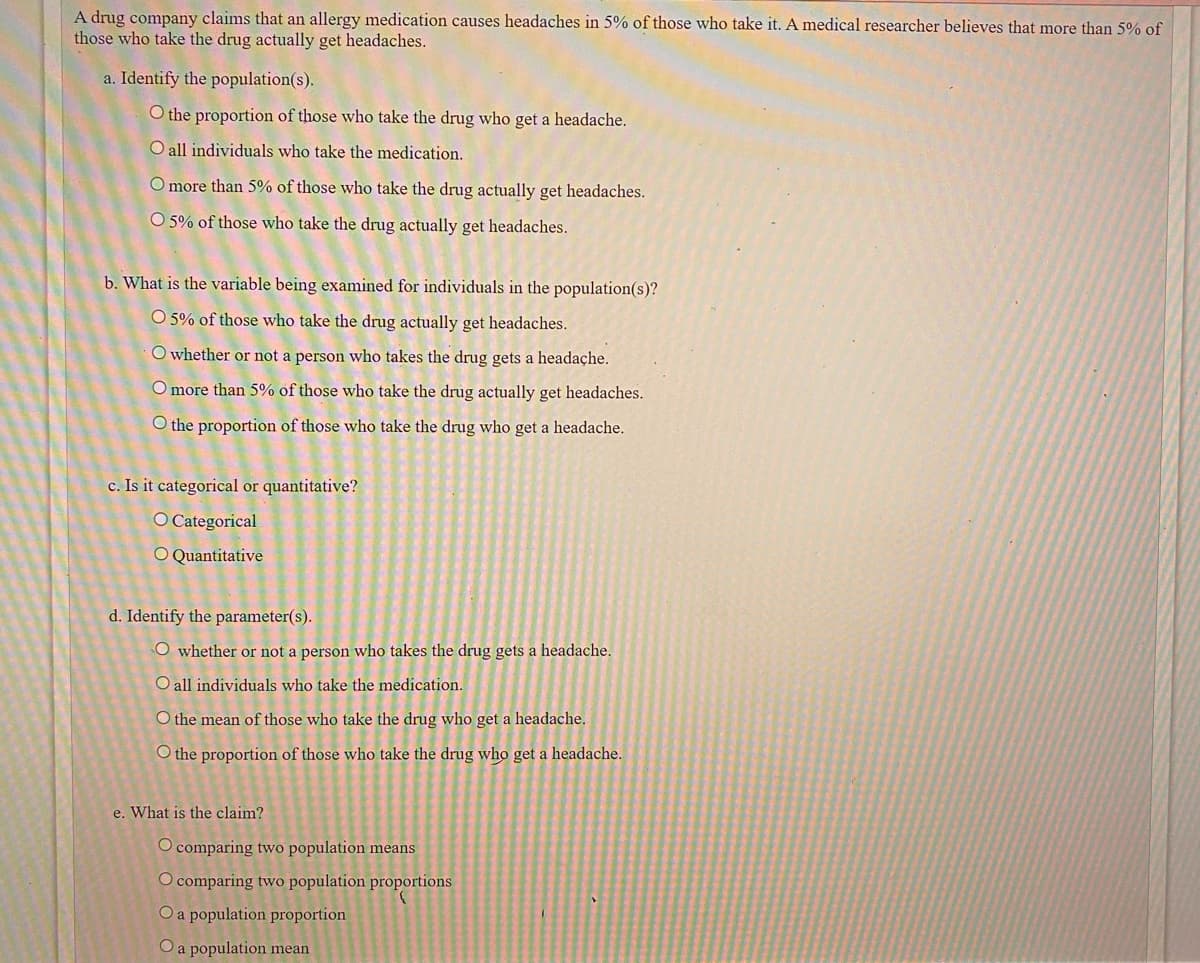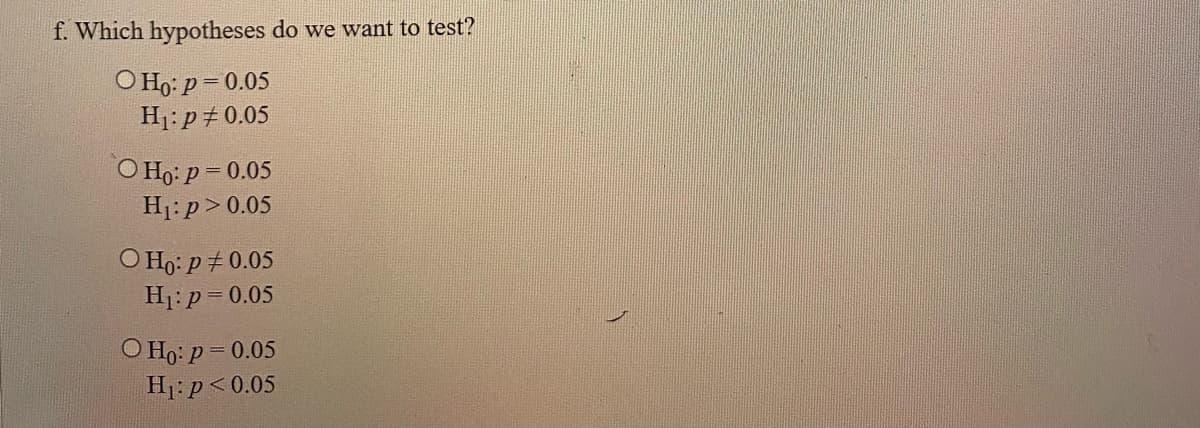f. Which hypotheses do we want to test? O Ho: p = 0.05 H1:p+0.05 O Ho: p = 0.05 H1:p>0.05 O Họ: p+ 0.05 H1:p=0.05 O Họ: p = 0.05 H1:p<0.05
f. Which hypotheses do we want to test? O Ho: p = 0.05 H1:p+0.05 O Ho: p = 0.05 H1:p>0.05 O Họ: p+ 0.05 H1:p=0.05 O Họ: p = 0.05 H1:p<0.05
Glencoe Algebra 1, Student Edition, 9780079039897, 0079039898, 2018
18th Edition
ISBN:9780079039897
Author:Carter
Publisher:Carter
Chapter10: Statistics
Section10.6: Summarizing Categorical Data
Problem 10CYU
Related questions
Question
100%

Transcribed Image Text:A drug company claims that an allergy medication causes headaches in 5% of those who take it. A medical researcher believes that more than 5% of
those who take the drug actually get headaches.
a. Identify the population(s).
O the proportion of those who take the drug who get a headache.
O all individuals who take the medication.
O more than 5% of those who take the drug actually get headaches.
O 5% of those who take the drug actually get headaches.
b. What is the variable being examined for individuals in the population(s)?
O 5% of those who take the drug actually get headaches.
O whether or not a person who takes the drug gets a headache.
O more than 5% of those who take the drug actually get headaches.
O the proportion of those who take the drug who get a headache.
c. Is it categorical or quantitative?
O Categorical
O Quantitative
d. Identify the parameter(s).
O whether or not a person who takes the drug gets a headache.
O all individuals who take the medication.
O the mean of those who take the drug who get a headache.
O the proportion of those who take the drug who get a headache.
e. What is the claim?
O comparing two population means
O comparing two population proportions
O a population proportion
O a population mean

Transcribed Image Text:f. Which hypotheses do we want to test?
O Ho: p = 0.05
H1: p+0.05
O Ho: p = 0.05
H1:p>0.05
O Họ: p+ 0.05
H1:p= 0.05
O Họ: P= 0.05
H1:p<0.05
Expert Solution
This question has been solved!
Explore an expertly crafted, step-by-step solution for a thorough understanding of key concepts.
Step by step
Solved in 2 steps

Knowledge Booster
Learn more about
Need a deep-dive on the concept behind this application? Look no further. Learn more about this topic, statistics and related others by exploring similar questions and additional content below.Recommended textbooks for you

Glencoe Algebra 1, Student Edition, 9780079039897…
Algebra
ISBN:
9780079039897
Author:
Carter
Publisher:
McGraw Hill

Holt Mcdougal Larson Pre-algebra: Student Edition…
Algebra
ISBN:
9780547587776
Author:
HOLT MCDOUGAL
Publisher:
HOLT MCDOUGAL

Glencoe Algebra 1, Student Edition, 9780079039897…
Algebra
ISBN:
9780079039897
Author:
Carter
Publisher:
McGraw Hill

Holt Mcdougal Larson Pre-algebra: Student Edition…
Algebra
ISBN:
9780547587776
Author:
HOLT MCDOUGAL
Publisher:
HOLT MCDOUGAL